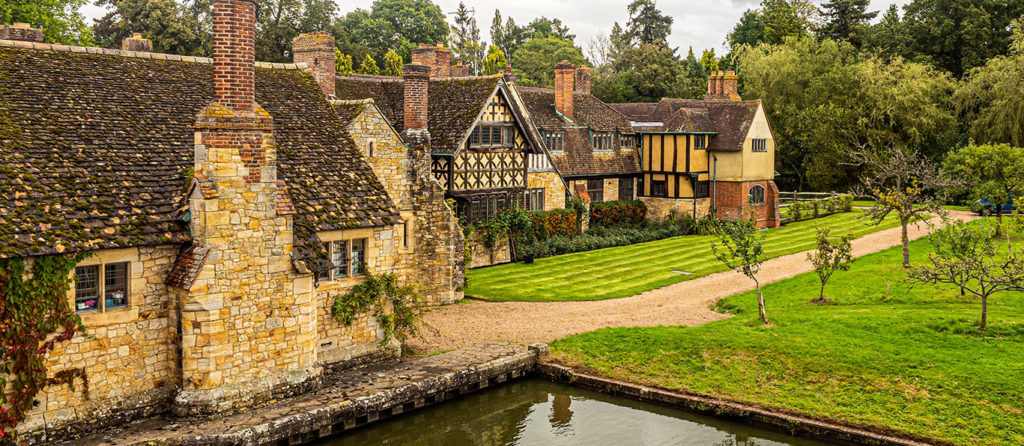Vanina Wittenburg discusses tax tips when donating culturally significant assets in Accountancy Daily

Vanina’s article was published in Accountancy Daily, 8 January 2024, and can be found here.
Tax tips when donating culturally significant assets
Vanina Wittenburg, senior associate at Hunters Law LLP, considers the options for donating important objects to the nation from gardens to textiles and jewellery, either during a taxpayer’s lifetime or on death, with an eye on effective tax planning.
Heritage work, and in particular the preservation of culturally significant assets for the benefit of the nation, is one of the most fascinating aspects of my work as a private client lawyer. This topic hit the headlines recently because of the exciting news that Munstead Wood, the former residence of one of the best and most well-known English gardeners in history, Gertrude Jekyll, with a garden designed by her and a house designed by Sir Edwin Lutyens, had been bought by the National Trust.
Although in the case of Munstead Wood it appears that an ad hoc agreement was reached between the owners, the National Trust and the government, there are a number of established schemes in place for the gifting of culturally significant assets which are available to taxpayers.
The fact that a garden can be preserved as a historically significant asset has started me thinking about the flexibility of the schemes, and how to access those schemes where it is not so obvious that an item might be significant.
All of these schemes require the asset proposed to be donated (which could be property, land or an object) to be ‘pre-eminent’, meaning that it must be of national, scientific, historic or artistic importance. It also has to be associated with a historic building in public ownership (including those owned by the National Trust or English Heritage), but that should not be taken to mean that it is only paintings or sculptures that can be donated.
In recent years donations through some of the schemes have included textile collections, religious artefacts, jewellery, musical instruments, antique coins, silverware, letters or other archives, fine furniture, clocks, ceramics (including a floor tile), weaponry, land, as well as Stephen Hawking’s office, in its entirety.
There is clearly huge scope in terms of the types of items that will be accepted, which is good news for individuals with unusual collections.
Tax exemptions
It is worth summarising the current government schemes, as follows:
- The Acceptance in Lieu (AIL) scheme, by which pre-eminent objects can be offered to a public institution in full or part payment of a liability to inheritance tax on a taxpayer’s death. The scheme’s aim is to ensure that pre-eminent assets of significant cultural heritage remain in the possession of the nation for the benefit of all citizens, rather than be sold privately and withheld from public view or even relocated outside the UK.
Initial checks are carried out by the heritage team at HMRC, in order to establish that the basic criteria of the AIL scheme are met, after which a group of experts at the Arts Council, the acceptance in lieu panel (the panel), makes a decision on whether the object in question is pre-eminent, is of acceptable physical condition, and the value at which it may be accepted under the terms of the AIL scheme.
- The Cultural Gifts scheme, which allows pre-eminent objects to be donated to public institutions during an individual’s lifetime (or by a company) in exchange for a reduction in liability to income tax, capital gains tax or corporation tax. The decision regarding whether items are deemed pre-eminent is also made by the panel, which bases its decision on the same criteria as for the AIL scheme.For both schemes, final approval of the offer lies with the secretary of state for culture, media and sport (or the relevant ministers in the devolved Scottish and Welsh governments, where applicable) in light of the recommendation of the panel, and subject to the two schemes’ annual budget.The annual limit for the amount of tax that can be satisfied under the schemes is £40m. In 2022/23, the schemes led to items worth £52m being acquired by the nation, with tax settled of £34.2m. The particular advantage to the taxpayer of the schemes is that when an asset is accepted and its market value agreed for these purposes, the taxpayer is given a ‘special price’.This is the agreed net value (after deduction of the notional inheritance tax) plus a ‘douceur’ of 25% for an object and 10% for land and buildings. This means that for an object, for example, the net value of the asset to the taxpayer is 17% more than if it had been sold on the open market and the inheritance tax paid accordingly.
- Conditional Exemption, by which gifts of property (either land or objects) which is deemed important to the UK’s national heritage and which would normally be chargeable (ie, where the asset is retained in private ownership) can have their inheritance tax liability deferred, provided that certain conditions relating to public access and preservation are continuously met.Should the item donated be sold, or should any undertaking regarding its retention be breached, Conditional Exemption will be withdrawn and a tax charge will arise as a result. Advice from the heritage advisory agencies is sought by HMRC to determine whether an asset qualifies for Conditional Exemption.
It is also worth noting that objects can be left to charity by Will, or gifted to a charity during a taxpayer’s lifetime, without any inheritance tax being incurred thanks to the charitable exemption. However, by utilising the Cultural Gifts or Acceptance in Lieu scheme, the taxpayer can benefit from an additional reduction in their remaining tax liability, and therefore it is worth pursuing one of these options over a simple charitable gift.
There are a number of options for donating important objects to the nation, either during a taxpayer’s lifetime or upon death. One of the biggest takeaways from recent conversations with heritage professionals is that pre-eminence can be interpreted extremely widely, as shown by the non-exhaustive list of items which have been accepted into the schemes in recent years.
This means that if a taxpayer owns an item which they think has played a role in the nation’s history (no matter how random the item may seem), there is no reason not to investigate whether it could be donated to the nation.





